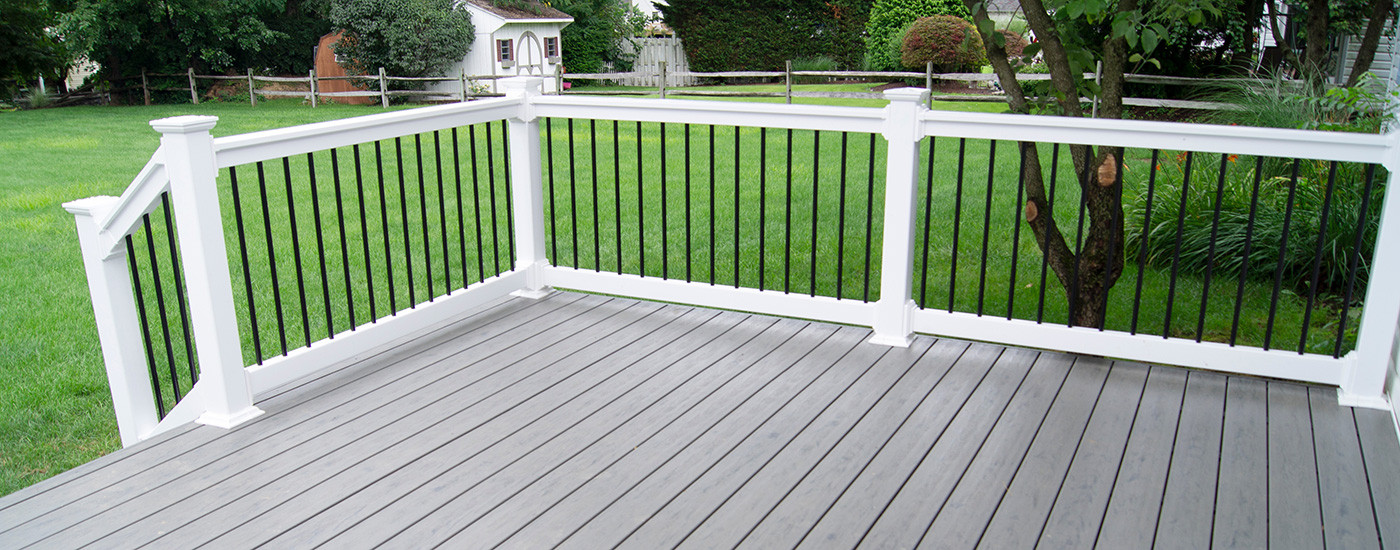Whether you choose composite decking or the more traditional timber decking for your next project will ultimately come down to personal preference but there are aspects to consider to help you make the right decision for you, including cost, maintenance, environmental credentials, durability, and aesthetics (appearance).
What is timber decking?
At Witham Timber, our timber decking is chosen from high quality, graded timber that is imported from Sweden and the Baltic States. It is kiln dried and pressure treated prior to sale.
The pros and cons of timber decking
Cost of timber decking
If budget is a consideration, timber decking boards are more cost effective than composite boards, even factoring in the cost of ongoing maintenance.
Maintenance of timber decking
Where maintenance is concerned, a timber deck will need on-going maintenance but if this is carried out correctly, the decking will last a lifetime. Our guide ‘How to stain wood like a professional’ will give you lots of tips. If timber decking becomes damaged, for example through scratching, the damaged section can be easily treated or even replaced. This means that the entire decked area will not need to be renewed if there are smaller areas of damage.
Is timber decking environmentally friendly?
Timber decking that has been sourced ethically from sustainable forests is extremely eco-friendly. In addition to being a completely natural product, with zero plastic content, timber decking can be disposed of in an environmentally-friendly way or repurposed at the end of its life.
Durability and strength of timber decking
Solid timber decking is durable and strong and will tolerate heavy weight without buckling or breaking. As a structural medium, timber will require fewer supporting joists when used in decking, keeping additional costs down. When decking substantial areas, this can be an easily overlooked consideration.
The aesthetics of timber decking
For many, nothing compares to the authenticity of real wood. Timber decking will have variations in tone and display character thanks to natural features found in timber such as knots, offering a traditional and natural appearance. Over time, a timber deck will age beautifully, perhaps starting as pale green which will age to a warmer, honey tone before maturing completely to a silver grey.
What is composite decking?
Composite decking is manufactured from a mixture of recycled timber and plastic, in a protective outer shell.
The pros and cons of composite decking
Cost of composite decking
The manufacture of composite decking is more expensive than that of timber decking and this is reflected in the retail cost, which is higher; there are variations too in the price of timber decking, dependent on the variety of wood chosen. By comparison to timber decking, composite requires minimal on-going maintenance, beyond regular cleaning, which is cost saving in terms of wood stains, oils and preservatives.
Maintenance of composite decking
An extremely low maintenance option for decked areas, composite decking requires no treatments or staining to guard against water damage and is supplied with a 25-year limited residential warranty. Unlike timber however, composite decking that suffers from superficial scratches cannot simply be sanded down and the affected section would need to be replaced.
Is composite decking environmentally friendly?
The eco credentials of composite decking speak for themselves. Manufactured from 95% recycled products, which would otherwise be destined for landfill, the production of composite decking does not contribute to the world’s deforestation.
Durability and strength of composite decking
Not as naturally strong as timber, composite decking will require extra support. This can be achieved by positioning joists closer together to avoid warping but this will impact on cost. The mix of natural (wood) and synthetic (plastic) components in composite decking means that it will not splinter or rot, while the high-density structure of the boards renders them less susceptible to infestation.
The aesthetics of composite decking
The finish and colour of composite decking is consistent, without the natural variations of appearance that its timber counterpart offers. Where timber decking can be stained in different colours, composite decking is available in a variety of colours and offers a uniform texture, that will endure without the need for regular staining or painting.
At Witham Timber, we supply timber decking and TREX composite decking, along with all the components and accessories required to construct a full decking system. If you have any questions about the best system for your decking needs, our experienced staff is available to help and advise. Email us at sales@withamtimber.co.uk or call 01205 359188 today.

